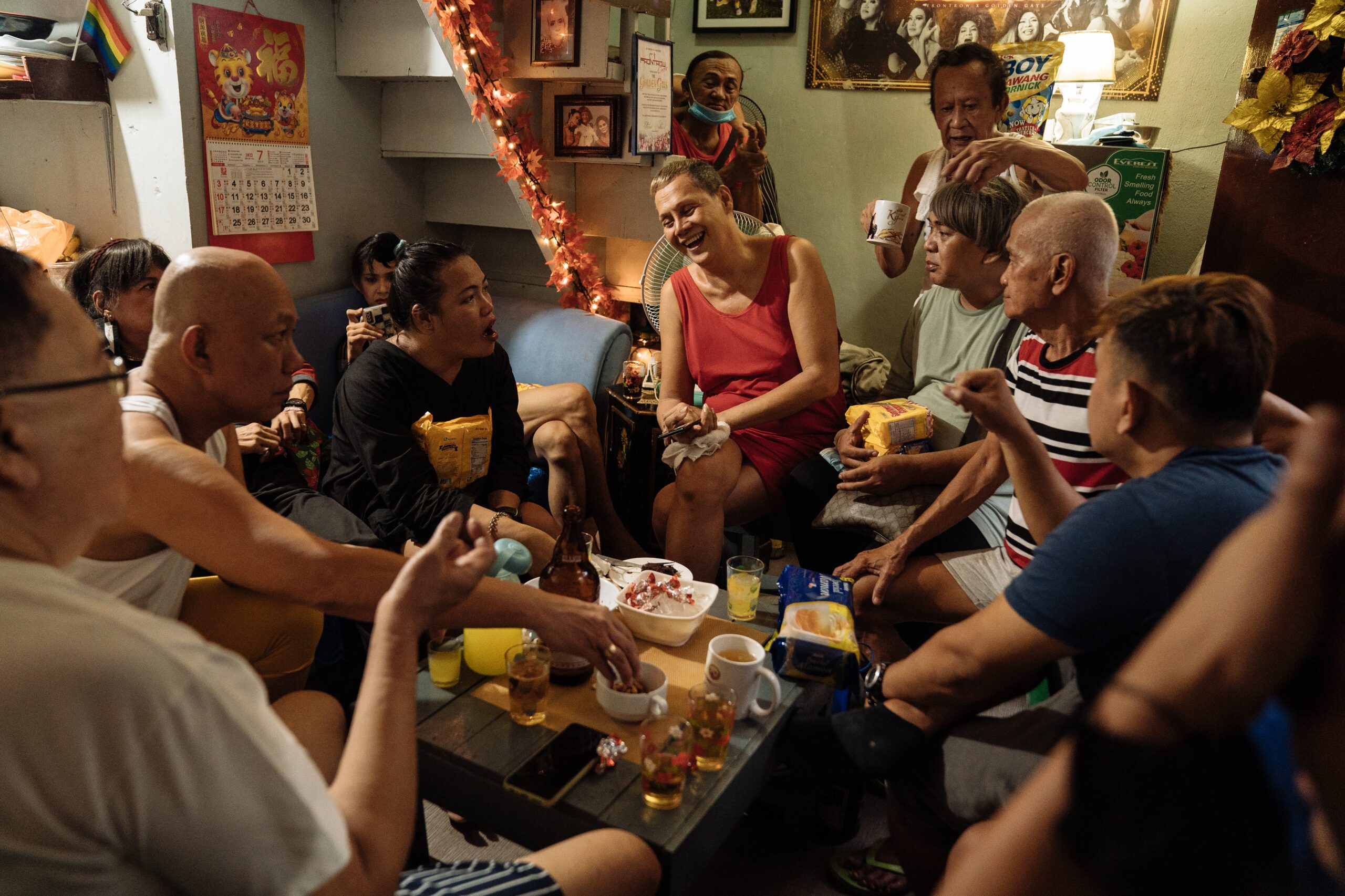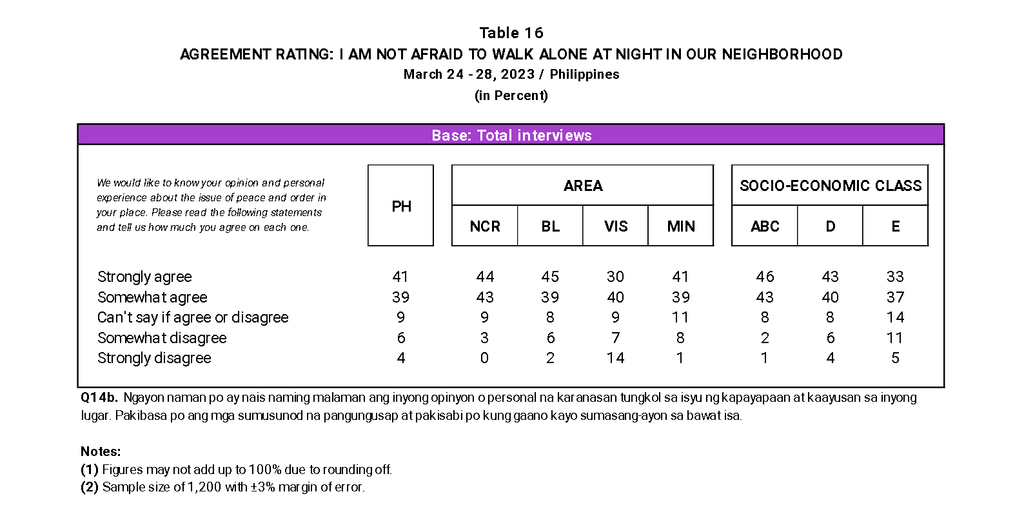SUMMARY
This is AI generated summarization, which may have errors. For context, always refer to the full article.

MANILA, Philippines – Most Filipinos feel safe within their neighborhood, an independent survey conducted by Octa Research in March 2023 found out.
Octa Research pulled in responses from 1,200 males and females aged 18 years old and above from a survey fieldwork conducted from March 24 to 28 using face-to-face interviews.
Octo Research’s Tugon ng Masa survey, which aimed to measure ‘adult Filipino perceptions of safety in their community,’ found that 87% of respondents ‘feel safe within their neighborhood.’
The survey also found there were barely any differences between urban and rural residents’ perception of safety.
Educational attainment was not a huge deal-breaker with security. Vocational education and elementary finishers, college graduates, post-graduates, and those with no formal education do not differ much in their perception of safety.
Safety was measured through people’s perception of whether their neighborhood was safe from drugs, theft, and for walking alone at night.
The respondents were asked: Ngayon naman po ay nais naming malaman ang inyong opinyon o personal na karanasan tungkol sa isyu ng kapayapaan at kaayusan sa inyong lugar. Pakibasa po ang mga sumusunod na pangungusap at pakisabi po kung gaano kayo sumasang-ayon sa bawat isa.
(English translation provided by Octaresearch: We would like to know your opinion and personal experience about the issue of peace and order in your place. Please read the following statements and tell us how much you agree on each one.)
Perception of safety
In major areas. National Capital Region (NCR) and Balance Luzon accounted for having the highest number of residents who felt safe at 91% or 9 out of 10.
In regions, all residents or 100% from both the Cordillera Administrative Region and Mimaropa felt safe.
Classes ABC and D had the highest percentages of Filipinos who felt safe, with 92% and 90% respondents affirming their perception of well-being, respectively.

Insecurity in their own neighborhood were similar across regions: NCR at 3%, Balance Luzon at 4%, Visayas at 4%, and Mindanao at 5%.
Bicol Region had the highest percentage at 28% of adults who felt unsafe.
People from all socio-economic classes, including Class ABC, were not exempt from feeling unsafe. Class E was ambivalent about their safety.
Crime-free neighborhoods?
The survey also asked perception of the presence of drugs in their community. The survey found that 48% of Filipino adults believed their neighborhood was drug-free, with 23% thinking otherwise.
In Balance Luzon, 57% of residents believed they were living in a drug-free neighborhood, while 38% of residents in Visayas think otherwise. CAR has highest percentage of residents who believe their area is drug-free.
Residents in the NCR are ambivalent on whether or not their neighborhood is drug-free.

A big majority or 71% of respondents also felt safe in their homes, “believing that the probability of burglars breaking in was minimal.”
Meanwhile, most adults also felt safe walking alone at night. About 81% of adult Filipinos felt safe walking alone at night within their neighborhood, while only 10% have a different perception.
NCR has highest percentage of residents who were at ease walking at night, while Visayas has most residents who expressed lack of safety being alone at night in their neighborhood.
Class ABC has the highest percentage of Filipinos who felt safe walking at night, while Class E has most adults who didn’t feel safe.

Octa Research said the survey had a ±3% margin of error at a 95% confidence level. – Rappler.com
Add a comment
How does this make you feel?
There are no comments yet. Add your comment to start the conversation.